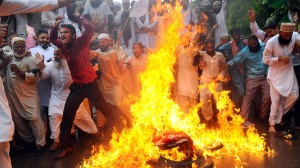“President Shot Dead,” “Attack on America” “Berlin Wall Crumbles”
Headlines like these have been fed to the world since the beginnings of the press and media in general. Always being a front page story, significant news stories that shape the world are the first thing a reader sees when he or she picks up a newspaper or turns on the news on the television.
It can be seen everywhere in the media. In newspapers, on news television channels, on Twitter and Facebook and more. Big story reporting is the mainstay of the media and press.
Recently, the attack and killing of four American citizens — including U.S. Ambassador to Libya Chris Stevens — on the U.S. Embassy in Benghazi, Libya on the anniversary of 9/11 has led to heightened reporting on the situation. It comes as no surprise, however, that such an important international story has been given so much attention.
Reporting on big stories doesn’t necessarily have to come from important current news, though. New York Times journalist Derek Willis explains that journalists could go about digging deeper to find the big stories rather than stumbling upon them from current events. This is probably mainly useful for uncovering tax records of presidential candidates and other stories of this nature.
Big story reporting, for now, refers to what is happening in the world. What is the most important aspect of the news. This is what will get the biggest headline and the most attention.


Leave a response